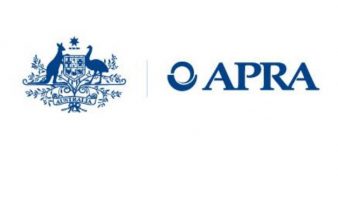APRA just relaxed lending quotas for Australian housing investors

APRA has announced it will remove the 10% annual cap on investor housing credit growth for some lenders.
It expects ADIs to develop internal limits on lending at very high debt-to-income levels, and policy limits on maximum debt-to-income levels for individual borrowers.
Restrictions on interest-only mortgage lending introduced in March last year will also remain in place.
The Australian Prudential Regulation Authority (APRA) has announced that it’s 10% annual cap on investor housing credit growth, introduced in December 2014, is no longer required given an improvement in lending standards over the past few years.
“In recent years, authorised deposit-taking institutions (ADIs) have taken steps to improve the quality of lending, raise standards and increase capital resilience,” APRA said in a statement released this morning.
“APRA has written to ADIs today to advise that it is now prepared to remove the investor growth benchmark, where the board of an ADI is able to provide assurance on the strength of their lending standards.”
Wayne Byres, APRA Chairman, said the announcement reflects improvements that ADIs have made to lending standards.
“The temporary benchmark on investor loan growth has served its purpose,” he said. “Lending growth has moderated, standards have been lifted and oversight has improved.”
According to data released by the Reserve Bank of Australia (RBA), annual growth in investor housing credit stood at just 2.8% in February, down from 10.8% shortly after the 10% limit was introduced.
However, Byres cautioned that the current environment remains one of heightened risk, noting that there are still some practices that need to be further strengthened.
“There is more to do to strengthen the assessment of borrower expenses and existing debt commitments, and the oversight of lending outside of policy,” he said.
“APRA is therefore seeking assurances from ADI Boards that they will maintain a firm grip on the prudence of both policies and practices.”
In order for the 10% annual cap to be removed, APRA said individual lenders had to show that lending has been below the investor loan growth benchmark for at least the past 6 months. It also said that lending policies need to meet APRA’s guidance on serviceability with lending practices “strengthened where necessary”.
For those ADIs that do not meet the APRA guidelines, it said the investor loan growth benchmark will continue to apply.
However, fitting with the view that some lending practices still need to be strengthened further, APRA said that it expects lenders to develop internal portfolio limits on the proportion of new lending at very high debt-to-income levels, and policy limits on maximum debt-to-income levels for individual borrowers.
“This provides a simple backstop to complement the more complex and detailed serviceability calculation for individual borrowers, and takes into account the total borrowings of an applicant, rather than just the specific loan being applied for,” it said.
While the decision to remove the 10% cap on annual investor housing credit growth for some lenders was expected given recent commentary from Byres, he said limits on interest-only lending introduced in March last year — capping them to 30% of total new housing loans — would remain in place.
“In the current environment, APRA supervisors will continue to closely monitor any changes in lending standards. The benchmark on interest-only lending will also continue to apply,” he said.
“APRA will consider the need for further changes to its approach as conditions evolve, in consultation with the other members of the Council of Financial Regulators.”
Read more at https://www.businessinsider.com.au/apra-australia-housing-investor-home-loan-2018-4#0iIMZyZvwvMZ7OEB.99

Recent Comments